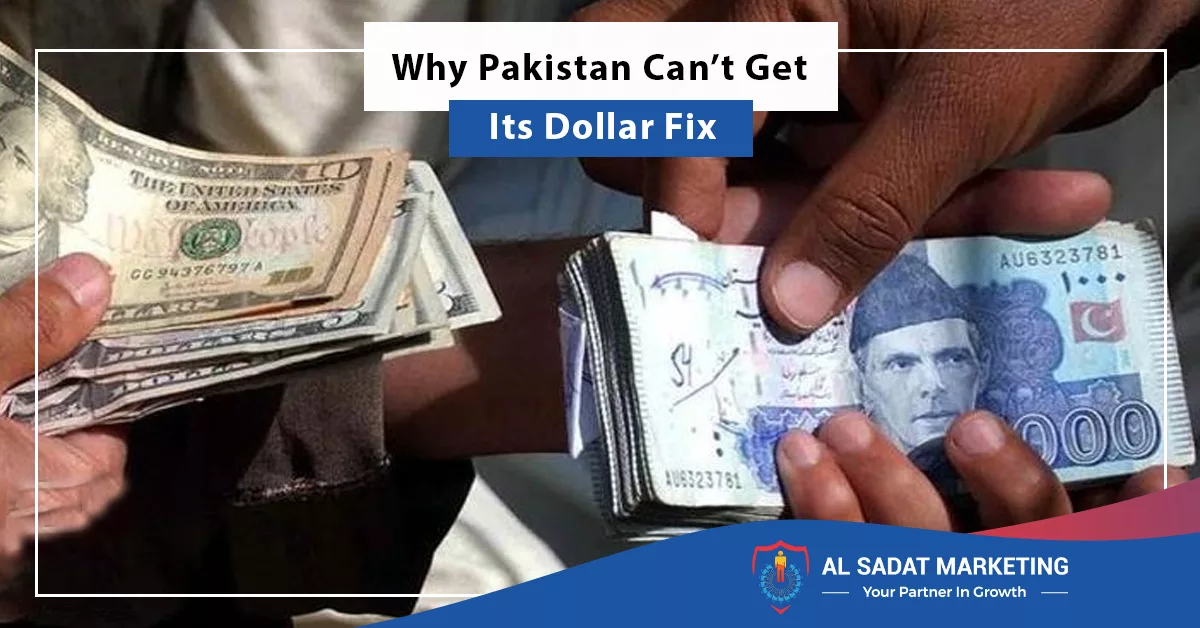The flight of the rupee
Over the past few weeks, the currency with the best performance has been the Pakistani rupee. When it was the highest-performing currency in September 2022, it lost 22% of its value in the four months that followed. This time around, a comparable result is also quite possible.
The government policy apparatus has become so fixated on controlling the value of the rupee in relation to the US dollar that it has neglected all other metrics in favour of focusing only on the PKR-USD parity as a gauge of social and economic well-being. The fallacy has been disproved so frequently that administrative actions taken to bring parity into a desirable range are taken and reacted to like clockwork.
Determining values
Demand and supply ultimately determine a currency’s value in relation to all other currencies. A currency’s value rises in tandem with an increase in demand or a decrease in supply. The price of any good or commodity can never remain set for very long; ultimately, the dynamics of supply and demand take over. This is demonstrated by thousands of years of economic history.
Pakistan’s economy has shifted towards consumption and has become significantly reliant on imports over time. Over the past ten or so years, consumption has accounted for over 90% of the country’s overall output. Demand from one of the world’s fastest-growing populations becomes dependent on imports as consumption rises beyond the availability of local supply.
Read More: Pakistan’s Debt Increased by Rs. 38 Trillion in Last 5 Years
Only when a nation has valuable currency to offer a trading partner can that nation import goods from that partner. The US dollar, the euro, the Swiss franc, the Japanese yen, and the British pound are the main currencies used in international trade because they are stable and valuable in the eyes of trading partners. Therefore, a nation must have access to these currencies in order for imports to occur.
The amount of imports rises together with the demand for a certain currency. Since most of our trade is conducted in US dollars, in the case of Pakistan, it is mostly in US dollars.
Only when a nation has valuable currency to offer a trading partner can that nation import goods from that partner. The US dollar, the euro, the Swiss franc, the Japanese yen, and the British pound are the main currencies used in international trade because they are stable and valuable in the eyes of trading partners. Therefore, a nation must have access to these currencies in order for imports to occur.
The amount of imports rises together with the demand for a certain currency. Since most of our trade is conducted in US dollars, in the case of Pakistan, it is mostly in US dollars.
Reason Why Pakistan can’t get its dollar fix
In Pakistan’s situation, we ceased investing in building up agricultural or industrial capacity that could generate export revenues and expand the supply of dollars as we became a consumption-oriented economy.
Over the past few years, the national pastime has shifted significantly in favour of investing money in real estate and other unproductive ventures that could never result in any export activity. At the policy level, we dissuaded investments in industrial or productive ventures; hence, any influx of US dollars in the form of foreign direct investments either decreased or dried up. Even while our remittances kept increasing, the economy’s consumption increased as a result, making matters worse.
Pakistan began to significantly rely on debt issued in foreign currencies to fund its expansion, in order to support the increase in import-driven, insatiable consumption. However, all good things must come to an end, particularly those that are heavily indebted.
The cost of debt denominated in foreign currencies has significantly escalated at this point, and Pakistan is unable to borrow money from any source other than a small group of friendly nations due to its propensity to continually be on the edge. Numerous of these cordial nations have also begun to sever their supply of unrestricted capital.
Read More: Govt to Setup System to Keep Dollars in Pakistan for IT Companies
Under such circumstances, Pakistan keeps limiting its foreign exchange reserves, giving debt repayment top priority before imports and other necessities. Pakistan requires access to an extra $7 billion annually to finance its growth, even at a pitiful 3 per cent annually, without altering the composition of the economy.
In the current situation, such a supply is not truly available.
It is evident that the demand for the USD much outweighs the available supply when seen solely through the prism of supply and demand. Any supply of USD in the near future will only be made available through temporary facilities provided by friendly nations, and even those assurances aren’t being fulfilled at this time.
Any increase in the value of the rupee can only be temporary and end in a crash if Pakistan is unable to increase the amount of USD it generates through profitable businesses, whether through exporting products and services or attracting foreign direct investment into export-oriented sectors.
The economy urgently has to be reorganized to promote investment-led growth, with the allocation of investment towards businesses that generate exports. The rupee might not be able to stabilize in the absence of such an economic retooling and might instead remain dependent on geopolitical rents rather than sensible, profitable businesses.
You can also invest in other famous and most in demand housing societies, such as , Blue World City, Rudn Enclave, 7 Wonders City Peshawar, Taj Residencia, Kingdom Valley, New Metro City Gujar Khan, Forest Town Rawalpindi, University Town Rawalpindi, ICHS Town, Park View City Islamabad, Multi Gardens B17 Islamabad and Nova City Islamabad.
Al Sadat Marketing please contact 0331 1110005 or visit https://alsadatmarketing.com/
Few more real estate housing schemes which are trending now a days in Islamabad by including: Faisal Town Phase 2, Prism Town Gujar Khan, New City Paradise, Eighteen Islamabad, 7 Wonders City Islamabad, Capital Smart City, Silver City Islamabad, The Life Residencia, Faisal Town Islamabad, Islamabad Golf City, Islamabad Model Town and Marble Arch Enclave.
Al Sadat Marketing is an emerging Real Estate Agency headquartered in Islamabad, Pakistan. With over 10+ Years of experience, Al Sadat Marketing is providing its services and dealing all trending housing societies projects in different cities of Pakistan. Islamabad Projects, Rawalpindi Projects, Gujar Khan Projects, Burhan Projects, and Peshawar Projects etc.
Book Your Plot Now: +92 331 111 0005










